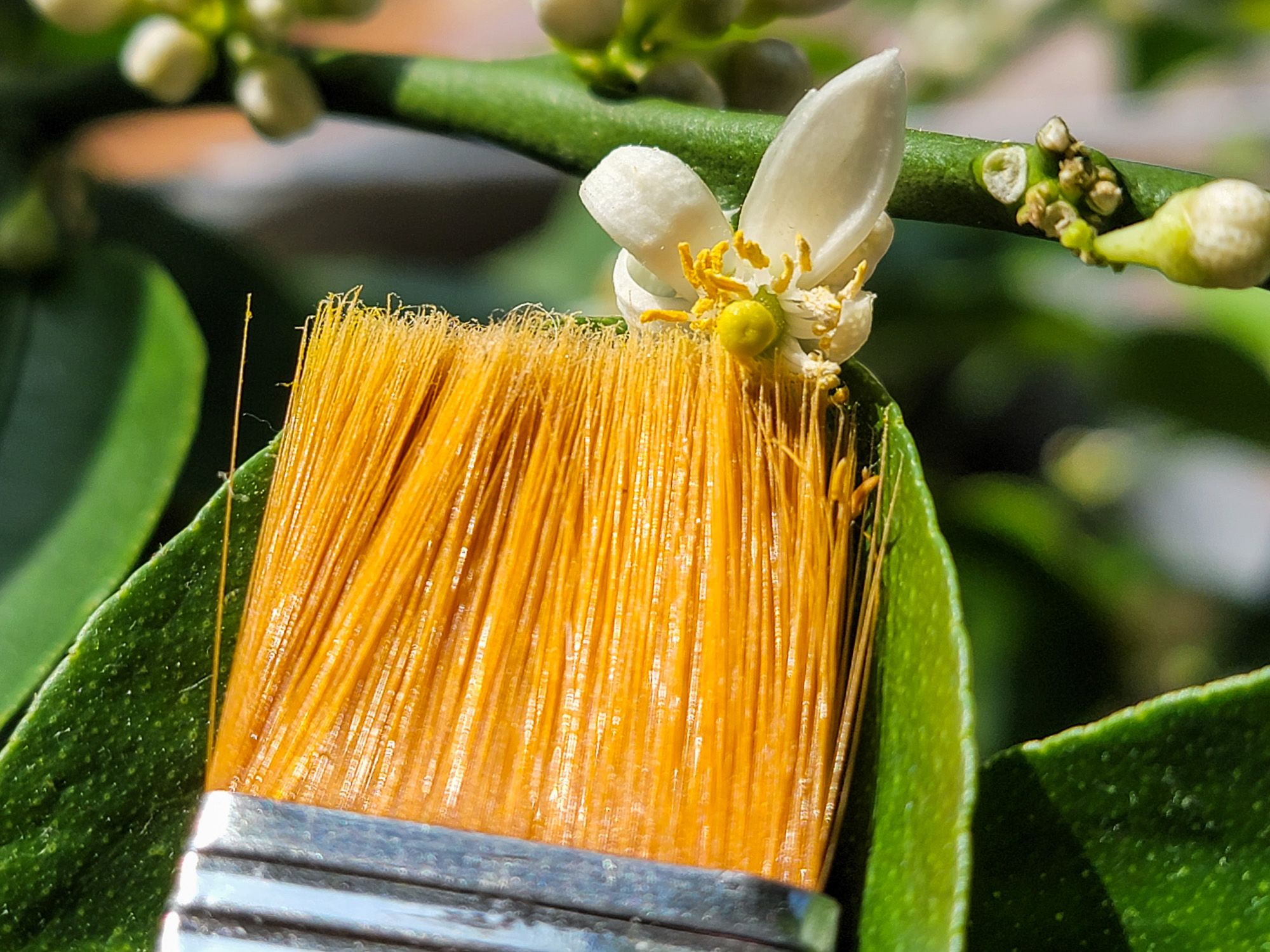Disclaimers: Our site uses demographic data, email opt-ins, display advertising, and affiliate links. Please check out our Terms and Conditions for more information.
When we first purchased citrus trees (such as our key lime, Meyer lemon, and others), one of the first questions we got from other gardeners was simply “you're going to keep them inside?”.
In living in western Pennsylvania, the answer was, of course- it will have to be indoors for half of the year.
The second question that then immediately would follow is “how will the flowers get pollinated?” to which I would reply “by me!” (by hand). After often surprising looks all around I would go on to say that hand-pollinating citrus trees is rather easy because, in all honesty, it is!
So in this one, I thought I would share the simple steps on how to pollinate lemon trees and other citrus trees you may have at home!
How Do Citrus Trees Pollinate?
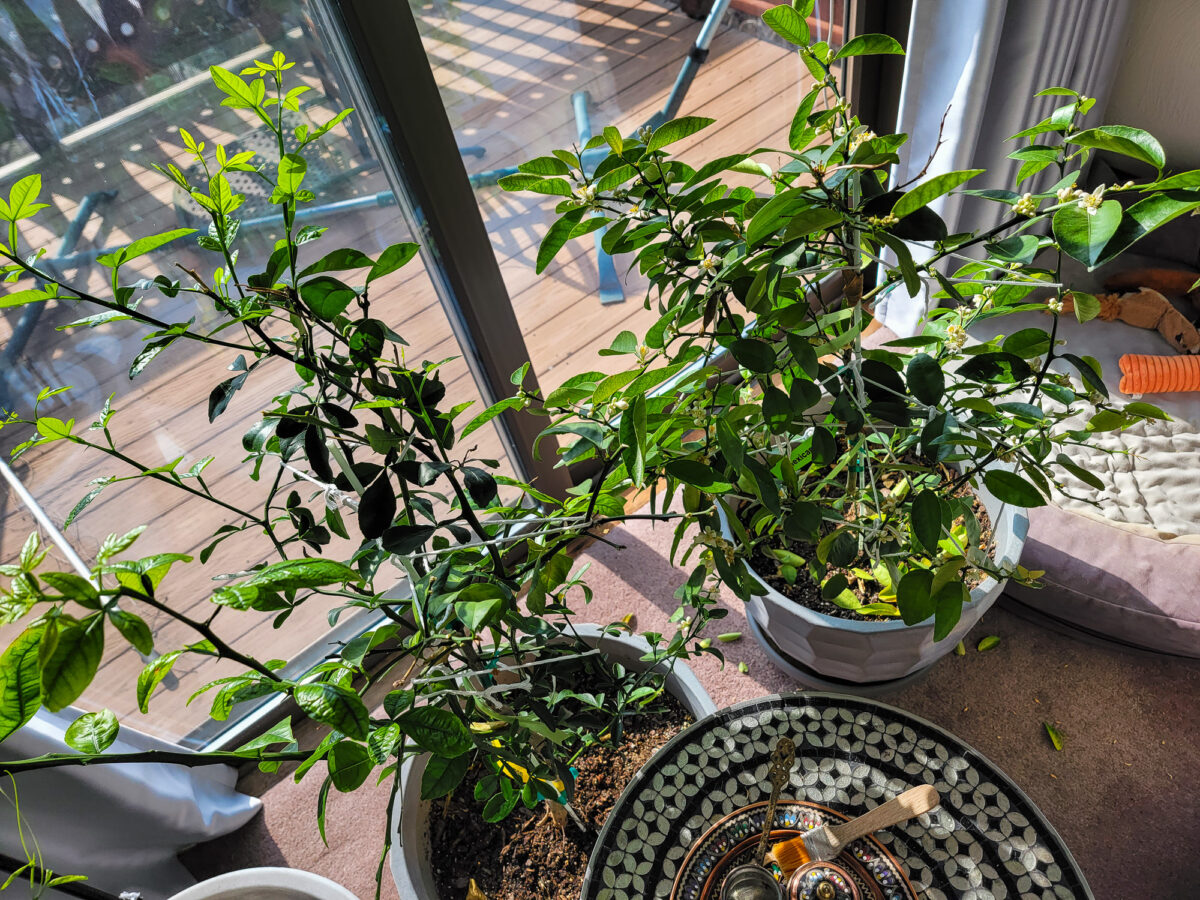
In general, most citrus trees (lime, lemon, etc.) are self-pollinating with few exceptions. This means you only need one tree to grow fruit successfully as a single plant has both male and female parts. Other fruit trees (our paw paws are a good example, admittedly not a citrus tree) require two unique trees in order to yield fruit. Other fruits (like our kiwi vines) require a male and female plant in order to fruit too.
So, by comparison, self-pollinating citrus trees are quite easy to manage for most species.
The pollinating process is rather simple- pollen is produced on anthers and has to be transmitted to the stigma. Once the pollen has touched the stigma the flower has been pollinated, and the plant starts to undergo the process of growing fruit!
Yes, it is really as simple as it sounds.
For those who want to control the process, your steps will differ whether your lemon tree is outdoors or inside. Thankfully, either way is rather straightforward.
Pollinate a Lemon Tree Outdoors
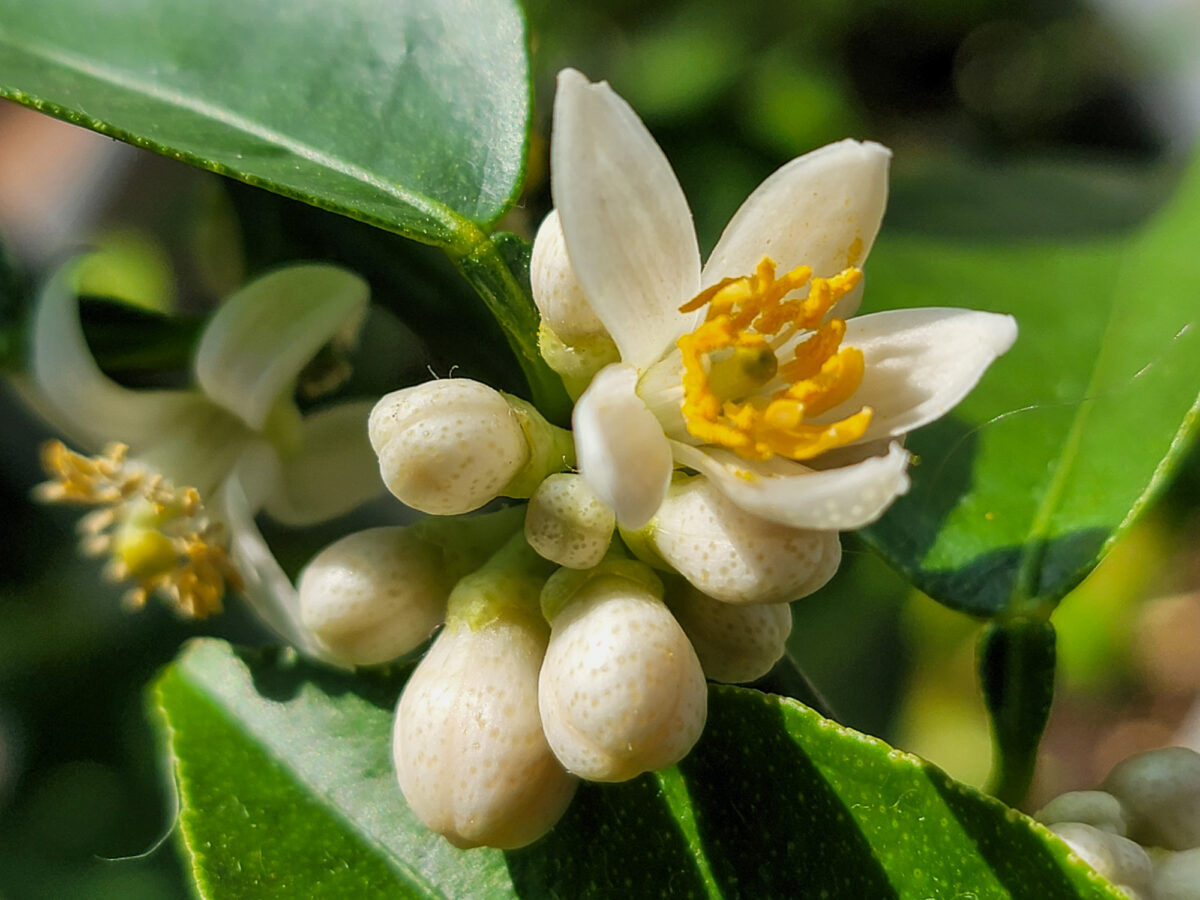
Pollinating a citrus tree outdoors should be easy and virtually a hands-off process. If your tree is outside in an area easily reached by bees, birds, and/or wind (which is to say, anywhere not enclosed like a greenhouse), pollination should occur without your involvement.
We would go as far as arguing that this is the case because on most citrus trees the flowers are not very large. As such, the anthers, where the pollen is found, are located incredibly close to the stigma. All it takes is the wind moving an anther just right, or a bee visiting to collect pollen, or a bird visiting, to make a connection between the anthers and stigma (or pollen and stigma) to have successful pollination.
So if your tree is outside, it is likely that all you have to do is wait. Given enough time and enough external factors, you'll have pollinated fruit.
Pollinate a Citrus Tree Indoors
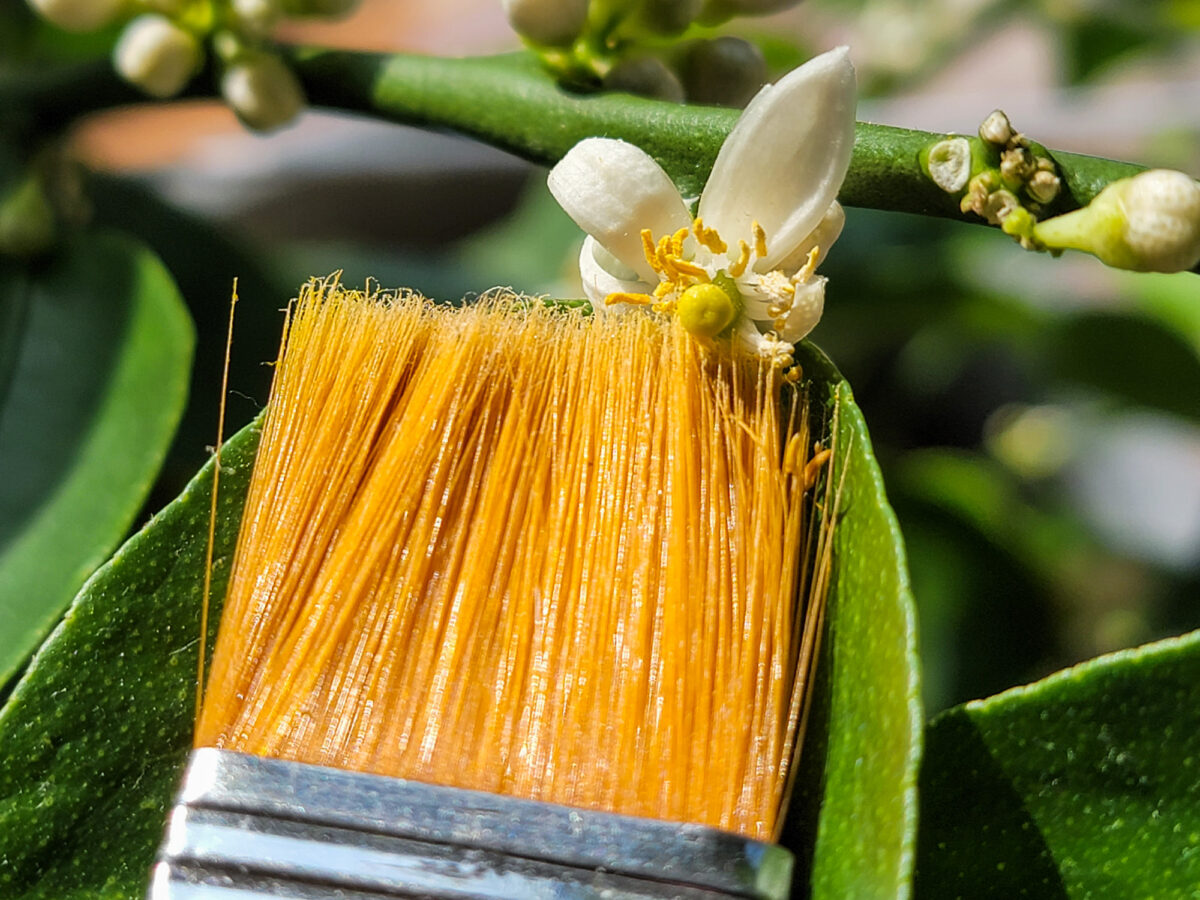
Those who have indoor citrus trees (hopefully) will not have birds, bees, or winds to help with pollination. This will be the case for those who live entirely in cold climates, or others, like us, who have to bring their citrus trees inside during winter. Even when indoors, a healthy tree should still produce flowers throughout the year, and you need to get involved in the pollination step.
Here, the process to fertilize your lemon tree is also simple. All you will need is a cotton swap, a fine paintbrush, or even your fingers!
Shortly after a flower has blossomed, simply use whatever tool you have at your disposal and lightly push an anther so it touches the stigma for a moment (if your flower allows, at least). You now have likely pollinated your plant! Yes, really it is that simple. If you are using a dedicated tool for this, it is entirely possible it may also collect pollen on itself, thus further aiding with the pollination of future flowers.
- We have read other guides that have said to touch the stigma with a brush, collect pollen on said brush, and then touch the brush to the stigma itself as the pollination mechanism. This would, obviously, be necessary if your flowers are too large such that moving an anther to a stigma is impossible. But at the same time, even with the finest paintbrush we own, we almost always invariably touched the anther to the stamen in the process of trying to collect pollen on the brush outright. Both seem to work for us for pollination, but you may have to test and see if this is the case for your plant as well. In either case, you are likely ensuring the pollen reaches where it needs to go!
Many gardeners like to do this several times over the course of a day for increased odds of success, but we have seen many flowers become pollinated by simply doing this once (we still try to pollinate twice a day when we remember). That being said, we personally find it best to pollinate the same day as any given flower opens up as after a day or two the leaves of the flower start to whither and become a lot more fragile- especially in young trees.
As such, if you wait too long to pollinate you may accidentally knock off a flower entirely as the plant has already started to drop the flower outright. But do not fret here because your citrus tree likely will produce so many flowers that it has to drop a good percentage anyway!
Not All Flowers Will Pollinate
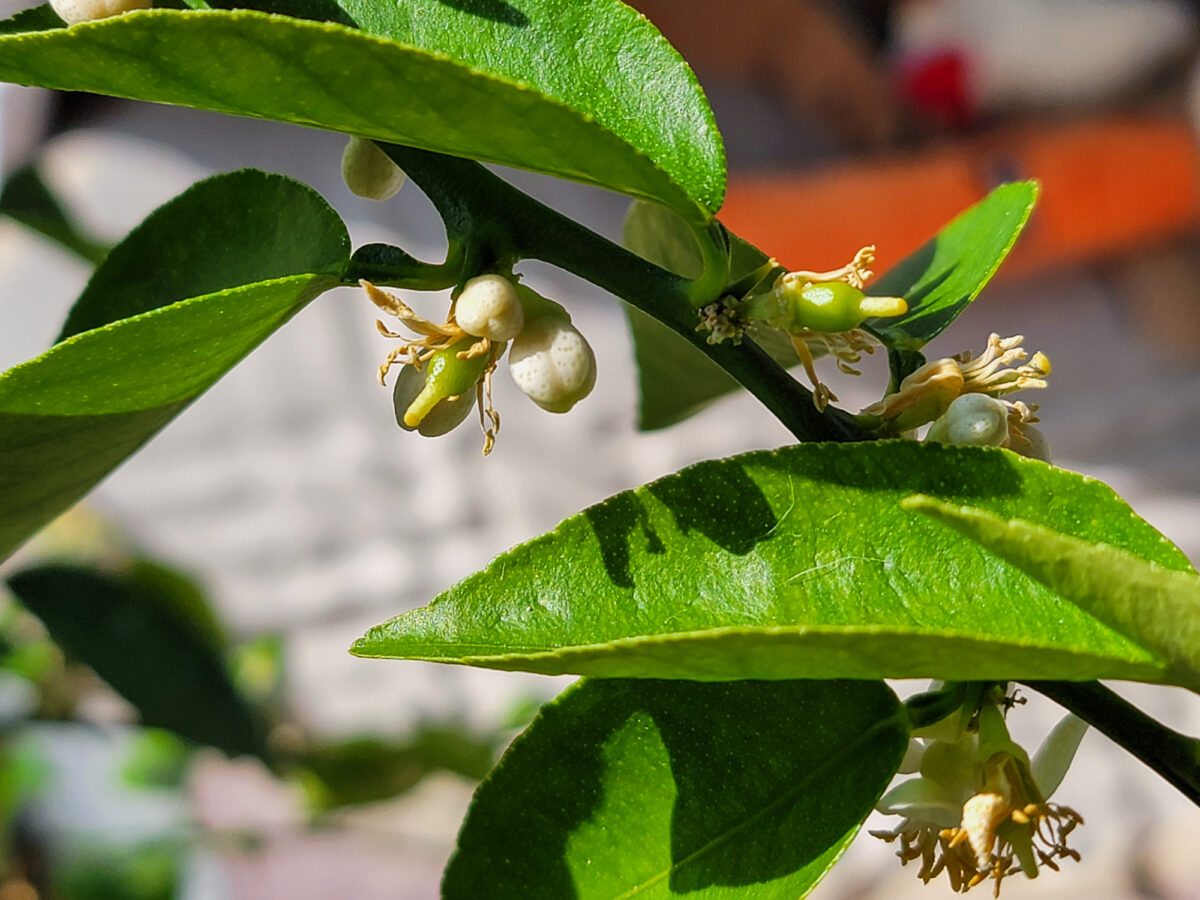
Ultimately, it is also worth noting that citrus trees tend to produce significantly more flowers than they can ultimately support as fruit. This volume of flower production looks pretty for us as observers but is simply a survival function for the plant. If it produces just one flower and it does not pollinate, reproduction failed that cycle. If it produces 200 flowers, 100 pollinate, and 50 ultimately become fruit, reproduction was an incredible success.
This is worth noting as you should simply not worry too much if any given flower didn't pollinate, or if fruit starts dropping off after pollination, or if for a young tree, no flowers pollinate at all!
In the latter case, this happened to us with a key lime tree as almost our first batch of the flowers did not appear to have a stigma (we do not know why this is the case, but we have read stories of this happening to others with similarly young plants). I pollinated a few that did have a visible stigma, but the tree was also dealing with water, humidity, and fertilizer imbalances that caused it to lose everything in the end. Thankfully, a few weeks later a second batch of flowers came in, all with a visible stigma this time and almost everyone I touched became pollinated.
The tree ultimately lost several of these, but that is indeed the point. Pollination is power by numbers!
So while it is possible that reduced flower pollination could be a sign of a deficiency in any major category, if you are having success with a small proportion you may simply have reached the stage where the tree is saying no more. Then it is a matter of waiting out for the fruit to grow, ripen, and hopefully turn into tasty fruit while maintaining an ideal growing environment wherever you may be!
Do you have any special techniques for pollinating your citrus tree? Comment below to share!
Looking to add a new citrus tree to your home garden? Click here to buy a new tree today!

